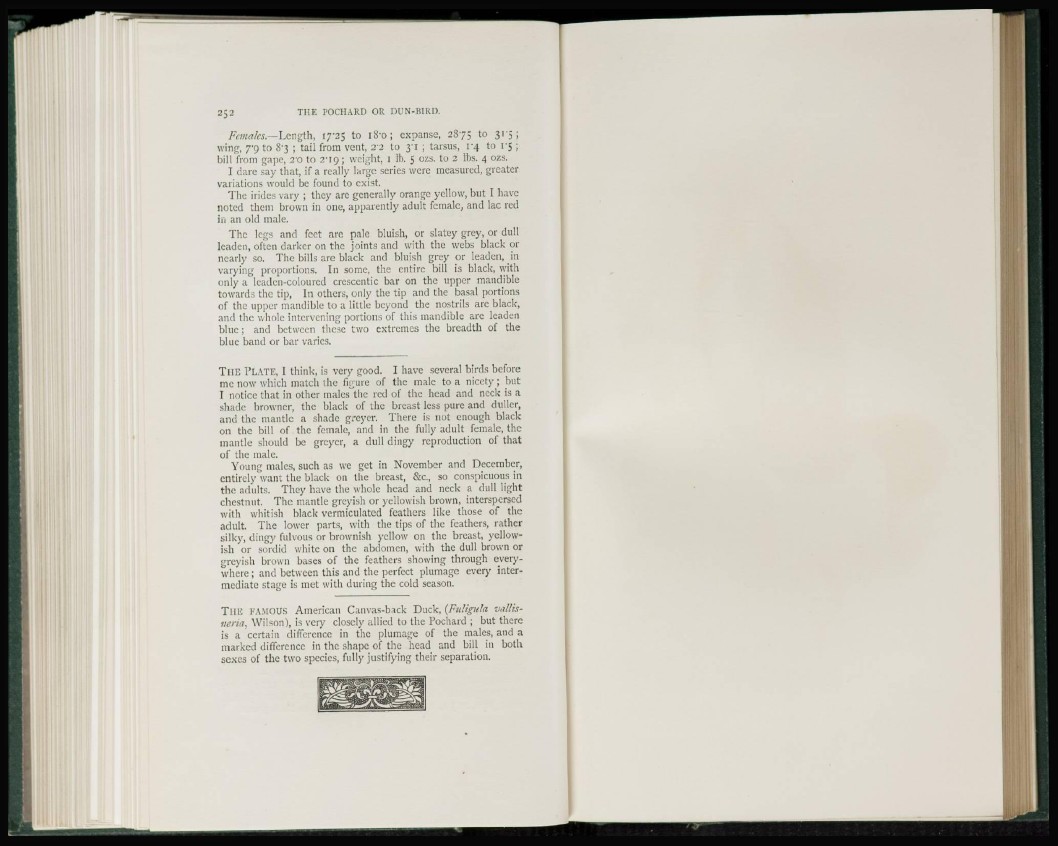
Females.—Length, 17'25 to 180; expanse, 2875 to 3 1 5;
wing, 7'9 to 8'3 ; tail from vent, 22 to 3-1 ; tarsus, 1/4 to 1/5 ;
bill from gape, 2'0 to 2-19 ; weight, I 11). 5 ozs. to 2 lhs. 4 ozs.
I dare say that, if a really large series were measured, greater
variations would be found to exist.
The irides vary ; they are generally orange yellow, but I have
noted them brown in one, apparently adult female, and lac red
b) an old male.
The legs and feet are pale bluish, or slatey grey, or dull
leaden, often darker on the joints and with the webs black or
nearly so. The bills are black and bluish grey or leaden, in
varying proportions. In some, the entire bill is black, with
only a leaden-coloured cresccntic bar on the upper mandible
towards the tip, In others, only the tip and the basal portions
of the upper mandible to a little beyond the nostrils are black-,
and the whole intervening portions of this mandible are leaden
blue : and between these two extremes the breadth of the
blue band or bar varies.
Tin-: PLATE, I think, is very good. I have several birds before
me now which match the figure of the male to a nicety; but
I notice that in other males the red of the head and neck is a
shade browner, the black of the breast less pure and duller,
and the mantle a shade greyer. There is not enough black
on the bill of the female, and in the fully adult female, the
mantle should be greyer, a dull dingy reproduction of that
of the male.
Young males, such as we get in November and December,
entirely want the black on the breast, &c, so conspicuous in
the adults. They have the whole head and neck a dull light
chestnut. The mantle greyish or yellowish brown, interspersed
with whitish black vermiculated feathers like those of the
adult. The lower parts, with the tips of the feathers, rather
silky, dingy fulvous or brownish yellow on the breast, yellowish
or sordid white on the abdomen, with the dull brown or
greyish brown bases of the feathers showing through everywhere
; and between this and the perfect plumage every intermediate
stage is met with during the cold season.
T H E FAMOUS American Canvas-back Duck, (Fuligula vallisneria,
Wilson), is very closely allied to the Pochard ; but there
is a certain difference in the plumage of the males, and a
marked difference in the shape of the head and bill in both
sexes of the two species, fully justifying their separation.